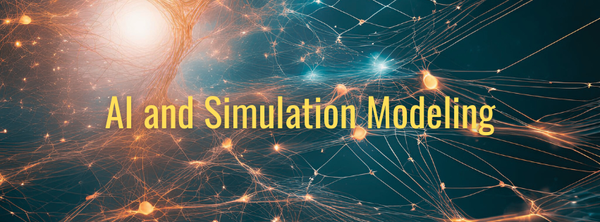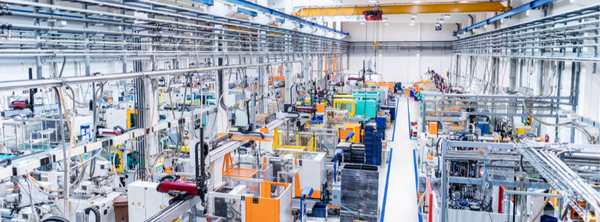Simulation and Industry 4.0

The world of industrial automation is rapidly advancing, and Industry 4.0 is the latest buzzword in the manufacturing sector. But what is Industry 4.0, and why is it relevant?
In the late 18th century, the first industrial revolution led to the introduction of machines powered by steam or water, which replaced muscle force. This revolution changed the way goods were produced, paving the way for a new era of industrialization and mass production. Electrical energy was introduced at the beginning of the 20th century, which marked the beginning of the second industrial revolution, or Industry 2.0. As computers became more common in the 1970s, the third industrial revolution, known as Industry 3.0, began. [1]
At the Hanover Fair 2011 for the first time, a synonym for such a new industrial revolution was mentioned, “Industry 4.0”. The focus of Industry 4.0 is to combine production, information technology and the internet. Thus, newest information and communication technologies are combined in Industry 4.0 with traditional industrial processes (BMBF 2012). [1]
[1] Source Dominik T. Matt; Vladimír Modrák; Helmut Zsifkovits. Industry 4.0 for SMEs . Springer International Publishing. Kindle Edition.
It appears that Industry 4.0 comprises anywhere between four and eleven (maybe even more) pillars, depending on where you look. Nevertheless, I believe there are four key elements of Industry 4.0: technology, data, processes, and people.
Wireless communication is the key technology in Industry 4.0. It allows real-time data transmission around the world. Like steam engines, electricity, and computers during previous industrial revolutions.
Automation is always discussed, but how do you know what to automate without a process and people who understand it?
What about Simulation in Industry 4.0?
Simulations are an important part of Industry 4.0, as they allow for the rapid testing and optimization of new designs and processes. By simulating a product or process, companies can quickly identify areas of improvement and optimize their production process without actually having to spend time, money, and energy on physical prototypes. This is especially useful in the case of producing complex goods and services, such as in the automotive, aerospace, and medical industries.
Simulations also allow a company to quickly predict the performance of a product or process in a variety of conditions. Companies can simulate the performance of a product in different temperatures, humidity levels, and even simulated customer interactions. By doing this, they can ensure that their products will perform well under different conditions, reducing the time and cost associated with physical testing.
In addition to testing and optimizing designs and processes, simulations also allow companies to develop new products and services faster. By simulating a process and its components, companies can quickly identify areas for improvement, test changes, and develop new products and services in a shorter amount of time. This increases the potential for innovation and creativity, leading to the development of new products and services that can be brought to market faster.




